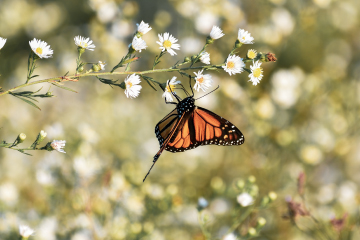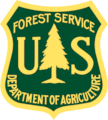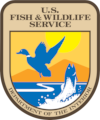Apr
04
2025
Latest
Nebraska’s Sandhills are a 19,300 square mile grass-stabilized, sand dune formation. Despite the semi-arid climate this landscape contains an abundance of lakes, wetlands, wet meadows, and spring-fed streams scattered throughout 12 million acres of grasslands. Grassland conversion to cropland is limited because of the sandy soil. However, invasion by Eastern Red Cedar continues at an […]
Read More
Apr
04
2025
The western portion of Tri-Basin Natural Resources District (Tri-Basin NRD) contains the eastern of the Loess Canyons landscape. This geography is dominated by loess soils with rolling to steep topography. As a result of the topography there are large contiguous tracts of grasslands in this portion of Tri-Basin NRD. These Loess Canyon grasslands are a […]
Read More
Apr
04
2025
Dr. Zhenghong Tang’s Geo-AI Research Lab at the University of Nebraska-Lincoln has published a new ArcGIS Story Map to visualize the inundation conditions for conservation lands in Nebraska, including Conservation Easements (CEs), Waterfowl Production Areas (WPAs), and Wildlife Management Areas (WMAs). The Story Map is publicly accessible and will assist stakeholders in implementing effective conservation […]
Read More
Apr
04
2025
Nebraska is 97% privately owned. This requires conservation solutions to fit into working farm and ranch operations to ensure sufficient groundwater, surface water, and wildlife habitat for Nebraska’s future generations. Research from the University of Nebraska Lincoln and Purdue University have highlighted that family, friends, and individuals from the agriculture industry sector are the most […]
Read More
Jan
06
2025
The RWBJV worked closely with multiple Natural Resources Districts (NRDs) and local Natural Resources Conservation Service (NRCS) staff to highlight grassland enhancement opportunities, as well as water quality and quantity conservation practices available through NRCS’s Environmental Quality Incentives Program (EQIP) and other partner programs. Twelve different strategic mailings were completed based on input from the […]
Read More
Nov
27
2024
The first field season concluded in July for a research project to study the response of grassland breeding birds to Eastern redcedar management in the Sandhills. This multi-year research effort is led by Dr. Sarah Sonsthagen and PhD student Rachel Rusten with Nebraska Cooperative Fish & Wildlife Research Unit at the University of Nebraska-Lincoln (UNL) […]
Read More
Nov
27
2024
The RWBJV submitted and was awarded our fourth Wetlands Reserve Enhancement Partnership (WREP) award to support playa protection and restoration. This WREP provides additional funding for the next three years to Nebraska NRCS as part of ACEP with a focus on playa wetlands. This application was developed statewide and includes all four Nebraska playa wetland […]
Read More
Nov
22
2024
Story By: Steve Mosley in partnership with the Rainwater Basin Joint Venture Near Funk, Nebraska – Tiny, almost microscopic seeds to be consumed by migrating birds in the millions are a treasure stitched into the fabric of Rainwater Basin wetland habitats. Seeds that remain provide the seedbank necessary to replenish the next year’s plant community […]
Read More
Jul
10
2024
On the outskirts of the City of Holdrege sits Lake Seldom, a 325 acre green space. But the area itself wasn’t always functioning like a playa wetland should. This area had previously been converted to farmland and a large pit had been excavated to concentrate water. In the early 2000’s, multiple partner organizations including Tri-Basin NRD, […]
Read More
May
28
2024
Playa wetlands in South Central Nebraska are important wildlife habitat and critical recharge points to Ogallala Aquifer. Natural Resource Districts have documented an acre of wetlands can recharge sufficient groundwater to irrigate 3.5 acres of cropland with 6 inches of allocation. Currently there is an open enrollment sign-up period for the Natural Resources Conservation Service’s […]
Read More
















